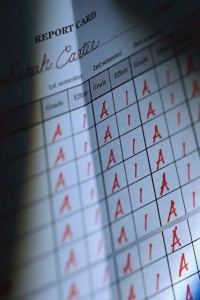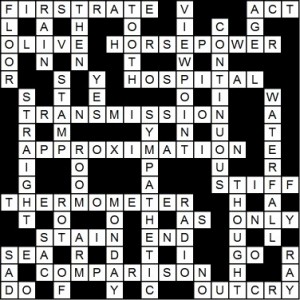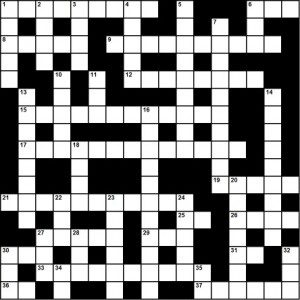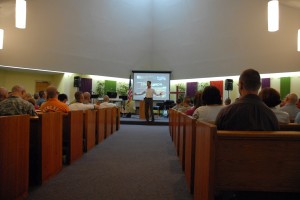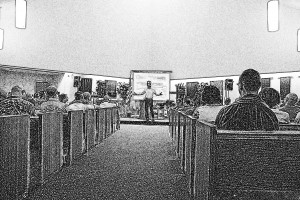In most states in the US, 16 is the minimum age to obtain a driver’s license. Some states are lower. For example, 14-year-olds may get a driver’s license in South Dakota. New Jersey is at the other extreme, requiring drivers to be at least 17 years of age. Also, most states require that student drivers take and pass a driver’s education class before they are eligible to take an official driver’s licensing exam from the driver licensing facility, or DMV (Department of Motor Vehicles), as it is called in many states.
 A driver’s education class typically has two parts. The first is a classroom component, where students learn about driving safety and “rules of the road” (laws regulating drivers). The second is a practical component (“behind the wheel”), where students practice driving with an instructor. In some classes, students must spend several sessions on a “simulator,” or mock car, before they are permitted to drive an actual car on the road. A student driver must successfully pass both components of driver’s education. He must also spend a minimum number of hours driving outside of class. Then he is given some sort of certificate to verify completion of the requirements and eligibility for taking the official driver’s exam, or “road test.” (When I was in school, we called this a “blue slip,” because it was blue.)
A driver’s education class typically has two parts. The first is a classroom component, where students learn about driving safety and “rules of the road” (laws regulating drivers). The second is a practical component (“behind the wheel”), where students practice driving with an instructor. In some classes, students must spend several sessions on a “simulator,” or mock car, before they are permitted to drive an actual car on the road. A student driver must successfully pass both components of driver’s education. He must also spend a minimum number of hours driving outside of class. Then he is given some sort of certificate to verify completion of the requirements and eligibility for taking the official driver’s exam, or “road test.” (When I was in school, we called this a “blue slip,” because it was blue.)
At the driver license facility, the student driver registers and waits for his turn to take the road test. An examiner will go in the car with him and give him various driving tasks to do. The examiner might ask him to drive down a certain road or turn left at a stop sign. The examiner might ask the student driver to parallel park by a curb. The examiner might even ask the student driver to do a three-point turn or a two-point turn. The examiner carries a clipboard with a checklist, and notes how the student driver did. He will check to see if the student driver performed the requested maneuver correctly. He will check to see if the student driver used turn signals properly. He will check to see if the student drove in an unsafe manner, and so on. If the examiner is satisfied with the student’s driving, he will pass the student. Then the student can exchange his “blue slip” for an actual driver’s license.
For adults who already know how to drive, a vision test and a written test (based on the “rules of the road”) are usually required in addition to a road test. The vision test is to make sure the driver can see well enough to drive. In Illinois, the requirement is 20/40 vision or better, plus peripheral vision (140 degrees). If the driver’s vision is not 20/40, he must wear glasses while driving. The glasses should correct the vision to 20/40 or better. The written test is not very hard. It consists mainly of sign recognition, and rules pertaining to specific situations (for example, does a driver commit a moving violation if he passes a stopped school bus?). Driver license facilities have booklets available for study. These booklets list the rules of the road that all drivers are expected to know. Studying these booklets gives a person enough knowledge to pass the written test.
After passing all the necessary tests, the student can get his driver’s license. He hands in all the paperwork and waits. When it’s his turn, the official will call his name and take his picture. After a few minutes, his driver’s license is finished, and he is now a full-fledged driver.

